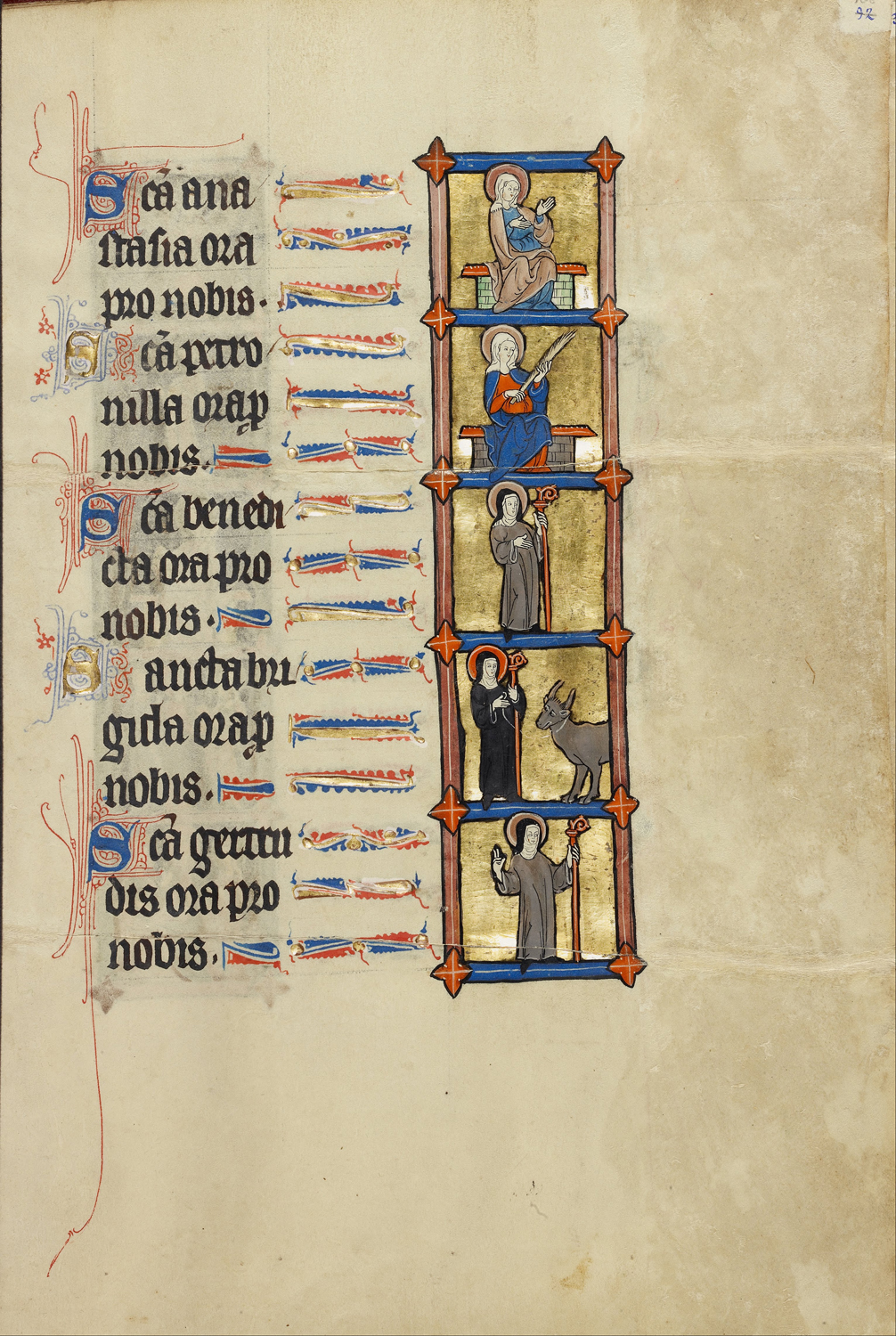
Manuscript Page with Five Female Saints
French, circa 1300
Tempera, gold leaf, and ink on parchment
MS. Ludwig IX 3, fol 106
J. Paul Getty Museum, Los Angeles
At the left of each picture is the saint's name followed by the words ora pro nobis, "pray for us." The first two saints, Anastasia and Petronilla, were martyrs. Petronilla holds the palm branch signifying martyrdom; Anastasia does not, although she too was a martyr. Unlike the other three, they are seated and dressed as matrons rather than nuns.
The next three saints – "Benedicta," Brigid, and Gertrude – are portrayed as abbesses in their nun's habits and carrying croziers. Brigid and Gertrude were indeed abbesses. "Benedicta" is the name of several saints who were martyrs in the early centuries and of one other, who seems to be remembered merely as a virgin and is probably the Benedicta intended here (feast day May 6).
Gertrude was a Benedictine, and the name "Benedicta" certainly makes her sound like one, so we may assume that their gray habits betoken their order and distinguish them from Brigid, who is not remembered as a Benedictine.
Why the cow in Brigid's picture? Butler (I, 226) quotes from the Breviarium Aberdonense a story in which the young Brigid was sent to milk the cows and bring home the butter but gave the butter to the poor instead. Another story reported in her Wikipedia page has it that a cow was sent to sustain her during the time that she was the young slave of a Druid.
Read more about images of St. Anastasia, St. Brigid, and St. Gertrude.
Source: The J. Paul Getty Museum via this page at Wikimedia Commons.